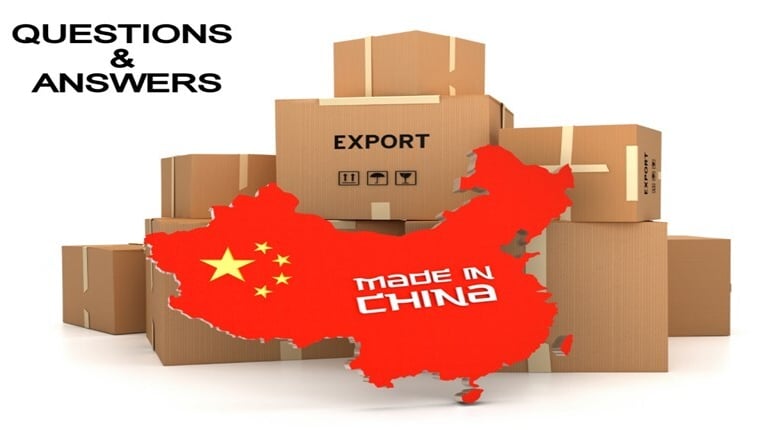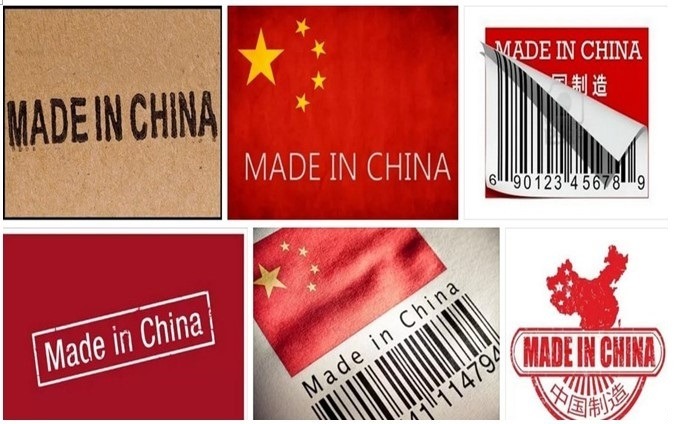Understanding "Made in PRC": The Truth Behind the Label
SOURCING AGENT
9/13/20245 min read


The global marketplace is vast, and consumers are bombarded with products from various countries. One of the most commonly seen labels is "Made in PRC." But what does this term mean, and why has it become such a popular identifier? In this article, we’ll take a deep dive into the meaning of "Made in PRC," its significance in global trade, and how it compares with "Made in China." We'll also explore the intricacies behind this simple label and its implications for both consumers and manufacturers.
What Does "Made in PRC" Mean?
The term "PRC" stands for the People’s Republic of China. When you see "Made in PRC" on a product, it simply means that the item was manufactured in China. It's an alternative way of stating "Made in China," often used to give products a more formal or neutral designation. But why the change? Why not just use the familiar "Made in China" label?
In recent years, many manufacturers and exporters from China began using "Made in PRC" for a couple of reasons. Firstly, it avoids the strong political and emotional connotations that sometimes come with the label "Made in China." Secondly, some buyers feel that using "PRC" instead of "China" makes the product seem more official or less associated with lower-quality goods, even though both labels refer to the same place.
"Made in PRC" vs. "Made in China"
At first glance, "Made in PRC" and "Made in China" seem identical in meaning, but there are subtle differences in perception. For decades, the "Made in China" label has been synonymous with affordable goods and large-scale manufacturing. While China’s industry has dramatically improved in quality and technological capacity, the stigma around cheap, mass-produced products lingers.
By using "Made in PRC," some companies aim to present their products in a more neutral or sophisticated light. The acronym creates a layer of abstraction that distances the product from preconceived notions of Chinese manufacturing. It doesn’t change the origin or quality of the product, but it may influence how consumers perceive it.
Why Do Companies Prefer "Made in PRC"?
There are several reasons why companies choose to label their products with "Made in PRC" rather than "Made in China":
Perception of Quality: Despite the vast improvements in Chinese manufacturing, some consumers still associate "Made in China" with inferior quality. By using "PRC," companies can avoid this perception and present their products in a more neutral light.
Political Neutrality: In certain regions, the term "China" can evoke political tensions. The acronym "PRC" is a more neutral designation, potentially reducing any negative associations or reactions from consumers who might have reservations about purchasing goods from China.
Marketing Strategy: Some brands simply want to differentiate themselves from the flood of products labeled "Made in China." By using "Made in PRC," they create a sense of distinction, even if it’s only superficial.
What is PRC? A Quick Overview
PRC, or the People’s Republic of China, was founded in 1949 following the Chinese Civil War. The term "PRC" is used to distinguish the country from the Republic of China (ROC), which is the official name of Taiwan. Mainland China operates under the PRC government, while Taiwan operates separately under the ROC.
Products Made in PRC: What You Should Know
Today, the People’s Republic of China is one of the world’s largest manufacturers, producing everything from electronics to textiles to heavy machinery. When you see a product labeled "Made in PRC," it doesn’t tell you much about the quality, functionality, or durability of the item. The label simply indicates that it was manufactured in mainland China under the governance of the People’s Republic of China.
Consumer Perceptions of "Made in PRC"
The shift from "Made in China" to "Made in PRC" is largely a branding decision. It reflects the evolving strategies of Chinese manufacturers and exporters to enhance their international image. But does the label really change how consumers view a product?
For some, it does. "PRC" is less direct and may not immediately register as China. For others, it makes no difference; they recognize that both labels refer to the same country. However, what’s important is the product’s quality and reliability, which can vary widely regardless of where it’s made.
The Evolution of "Made in PRC"
The shift from "Made in China" to "Made in PRC" is a fascinating reflection of global trade dynamics. Over the last few decades, China has grown to become the world’s manufacturing powerhouse. The "Made in China" label became a common sight on products worldwide, particularly in the West, where consumers were drawn to low-cost goods.
However, as China’s economy advanced and its manufacturing sector became more sophisticated, the government and businesses sought ways to reshape the country’s image. The goal was to move beyond the stereotype of cheap goods and present China as a producer of high-quality, innovative products. "Made in PRC" was one such strategy to help achieve this.
Made in PRC: Breaking Stereotypes
For years, many consumers associated Chinese products with low-quality, mass-produced items. However, that narrative has started to change. Major Chinese brands, such as Huawei, Lenovo, and Xiaomi, have challenged the outdated perception of Chinese manufacturing by producing cutting-edge electronics and innovative technologies.
The "Made in PRC" label represents this shift. It symbolizes the transition from low-cost, mass-market goods to higher-quality, sophisticated products. By using "PRC," manufacturers are signaling that Chinese products are on par with those from other major industrial nations.
"Made in PRC": How It Affects Global Trade
In the global economy, the label on a product can influence trade dynamics, consumer perceptions, and even geopolitical relations. "Made in PRC" has become an important part of China's effort to reposition itself in the world market. As China's role in the global supply chain continues to grow, so does the prevalence of the "PRC" label.
Future of "Made in PRC" in Global Manufacturing
As China's manufacturing capabilities continue to evolve, the "Made in PRC" label is likely to become even more common. The country is rapidly advancing in areas like robotics, artificial intelligence, and green energy. Products made in PRC are no longer just about cost savings; they are now also about innovation, quality, and technology leadership.
The future of "Made in PRC" will see more products that defy the traditional view of Chinese goods. The label may continue to evolve, but it will remain a powerful marker of China’s influence in global manufacturing.
Conclusion: The Global Importance of "Made in PRC"
"Made in PRC" is more than just a label; it’s a statement about the changing landscape of global trade, manufacturing, and consumer perception. While the term might seem like a simple acronym, its implications are vast and complex. It reflects the ongoing evolution of China’s role in the world economy and its efforts to shed outdated stereotypes associated with "Made in China."
As consumers, it's important to look beyond the label and evaluate products based on their actual quality and performance, rather than where they are made. "Made in PRC" is just one part of the story. The real value lies in the product itself—whether it's made in the PRC, USA, or anywhere else in the world.
Final Thoughts: What’s in a Label?
The "Made in PRC" label is here to stay, and it's likely to become even more prevalent as China continues to grow as a manufacturing powerhouse. Understanding the meaning behind this label helps us appreciate the broader context of global trade and how nations like China are repositioning themselves in the global market.
Whether or not a label influences your purchasing decision, it’s clear that "Made in PRC" is a reflection of China's ambition to redefine its image in the world. It’s up to consumers to judge whether that ambition translates into the quality and innovation they seek in the products they buy.


